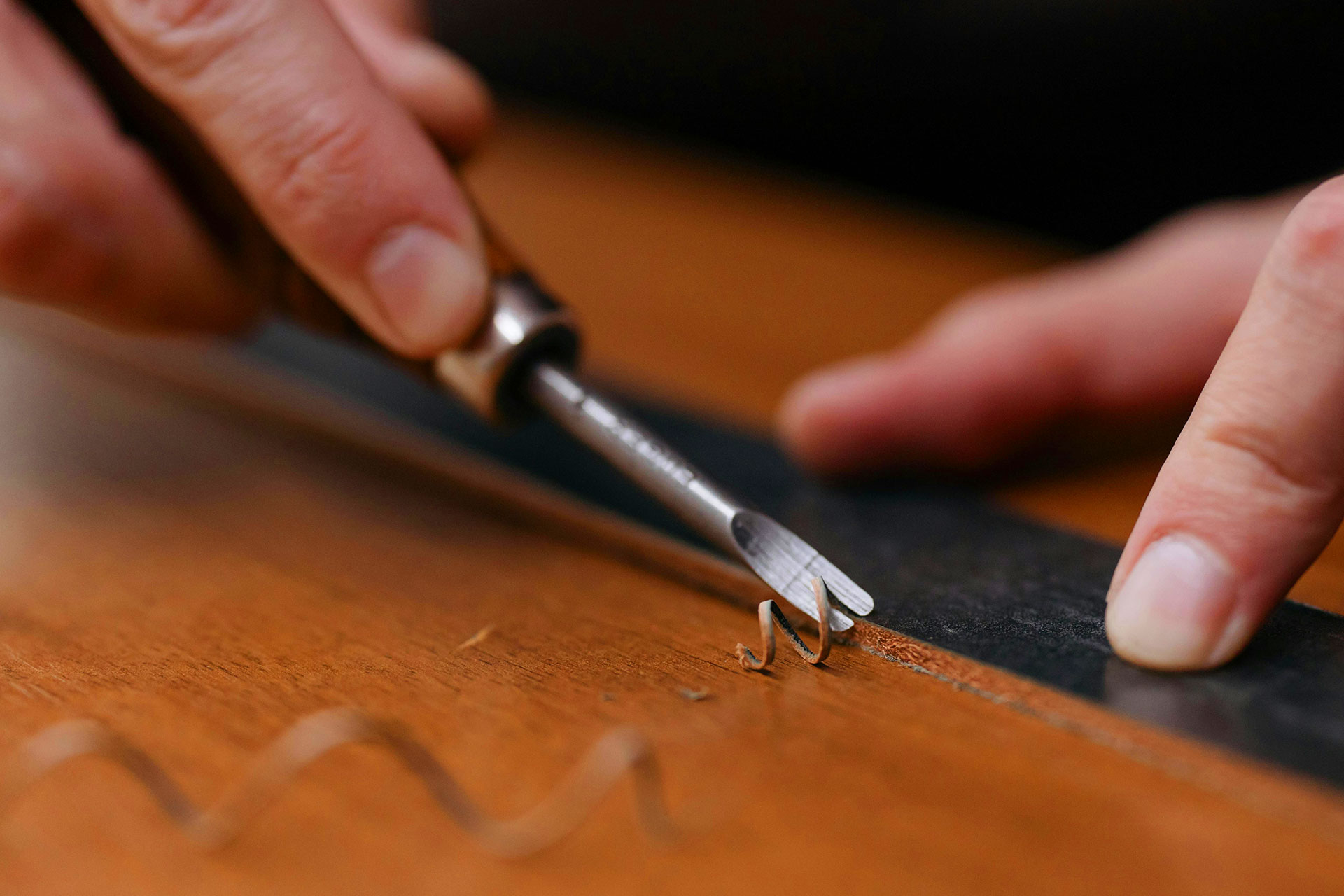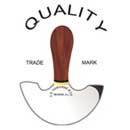
06 Nov 4 Secrets Behind Leather Edges That Look Factory-Perfect
There’s something satisfying about clean, smooth leather edges. The kind that look effortless, polished, almost machine-made, but weren’t. Real leatherworkers know that perfect edges don’t come from luck or shortcuts. They come from precision, patience, and the right rhythm between tool and technique.
Most beginners focus on stitching or color, but professionals know the truth: the edge makes the piece. It’s where craftsmanship either shines or falls apart.
The Cut Has to Be Honest
A clean edge starts long before burnishing. It begins with the cut. Sharp blades only, no exceptions. A dull knife drags the fibers, leaving fuzz that even the best burnish won’t fix.
Professionals don’t just slice; they glide. The angle is deliberate, the motion smooth. A single confident pass, not a sawing guess.
They also pay attention to the hide itself, grain direction, thickness, density. A good cut respects the material’s flow. When the knife moves right, the rest of the process falls into place.
Edge Beveling Is the Secret Nobody Talks About
Raw edges look thick and rough, no matter how much you sand or seal them. The beveler changes that. It rounds the edge, softens it, and gives it that professional curve you see on belts, wallets, and saddlery.
But beveling isn’t about force; it’s about consistency. Light passes, even pressure, always with the grain.
Here’s the trick most don’t realize:
- A sharp beveler, always polished
- A slight wrist rotation to follow curves naturally
- A quick strop between cuts to keep the edge keen
Sanding Isn’t Boring, It’s Magic
Sanding might sound dull, but it’s where rough turns to refined. The goal isn’t to remove material, it’s to blend layers and smooth the bevel.
Start coarse, end fine. Move evenly. Keep the motion controlled and steady. Some pros dampen the edge first to keep dust down and help fibers lay flatter.
Think of sanding as sculpting. You’re not erasing flaws, you’re defining the final shape.
Burnishing Is Where It Comes Alive
That glossy, glassy finish? It’s the result of friction, patience, and heat, not some miracle chemical. A wooden slicker, canvas cloth, or even bone can do the job.
First, moisten the edge with a touch of water or gum tragacanth. Then rub with steady speed until the fibers fuse and shine. Professionals don’t rush this part; it’s the soul of the edge.
The secret lies in timing. Too dry, and it frays. Too wet, and it muddies. The sweet spot is just damp enough to feel tacky under the slicker.
The Real Factory Secret
Machines don’t make those flawless leather edges you admire. They’re made by hands that understand patience, pressure, and precision.
Each stroke, each pass of the tool builds toward something simple yet rare, perfection that looks effortless because it’s anything but.
That’s the secret behind edges that don’t just look factory-perfect, they look alive.


